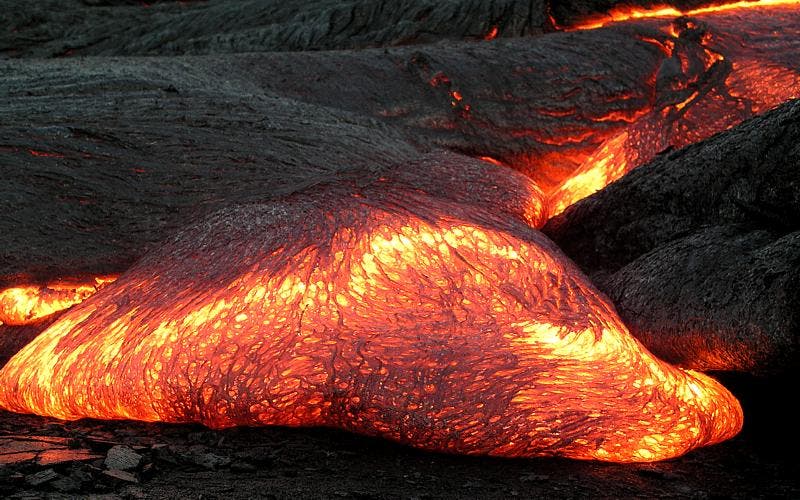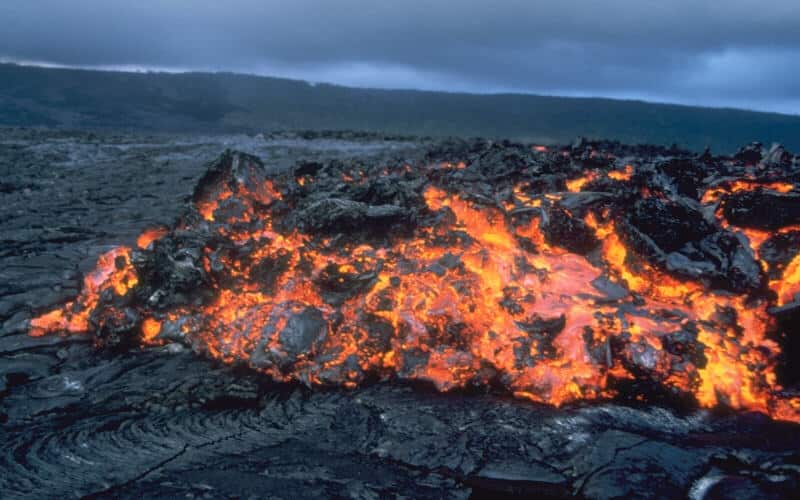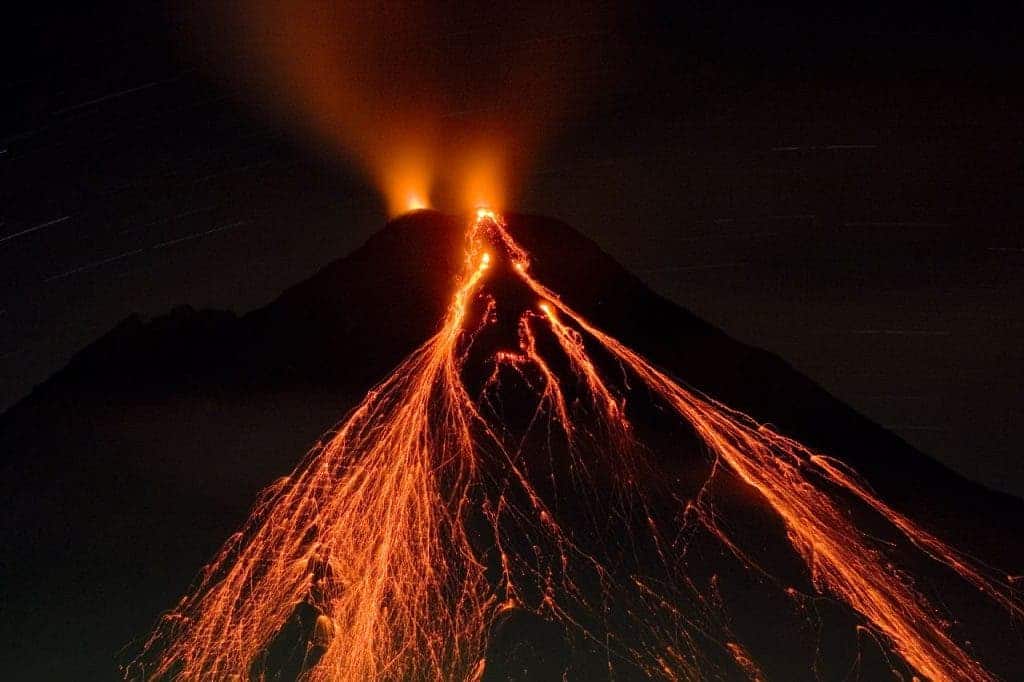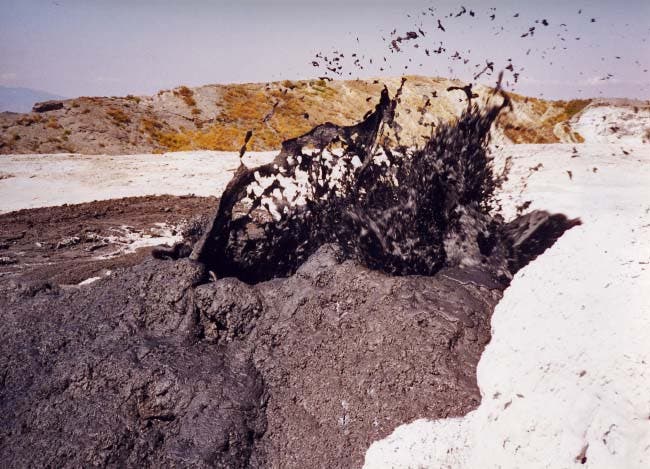Lava is an incredibly hot substance that forms when magma from the Earth’s depths rises to the surface and erupts through a volcano. It’s so hot that it can melt and fuse solid rock, creating the awe-inspiring volcanic landscapes we see on Earth. But exactly how hot is it?
There’s not *one* fixed temperature for lava. In fact, the temperature of lava can vary from a scorching 650 to an absolutely infernal 1600 degrees Celsius (1300 to 2900 degrees Fahrenheit). This huge variation depends on the lava’s chemistry — particularly on the minerals melted inside the lava.

What is lava
If we want to understand why and how lava can come at so many different temperatures, we first have to understand what lava actually is.
To put things simply, our planet has three main layers: the thin crust (which is everything we see on the surface), the thick mantle, and the core. The core is mostly (but not completely) isolated from the rest of the planet, but the mantle and the crust constantly exchange material. The crust is split into rigid plates — we call these tectonic plates. These plates are pushed around the globe at a speed of a few centimeters per year. In areas where the plates are pushed apart, magma from the mantle gushes to the surface, cooling down and solidifying, forming new rocks. In areas where the plates are pushed together, one plate can slide under the other, reaching the mantle, where it is melted and recycled. But mantle material can also reach the surface through volcanoes.
Sometimes, parts of magma in the mantle become hotter, and when they do become hotter, they become more buoyant and rise towards the surface, just like how hot air also goes up. So hotter-than-usual magma flows closer and closer to the surface, and if it reaches the surface, it can erupt through a volcano.

Essentially, lava is molten rock that has been ejected and reached the surface, although generally speaking, lava is ejected only through non-violent eruptions. In other words, lava often flows from volcanoes before the cooler temperature of the surface forces it to solidify and cool down. We’ve discussed the difference between magma and lava in detail here.
In terms of what it’s made from, the mantle consists of over 44% oxygen, over 22% magnesium, and over 21% silicon. It also has smaller proportions of aluminum, iron, and other elements.
Common types of lava
The composition of magma can vary significantly, and consequently, the composition of lava can vary significantly. Those three dominating elements can combine with each other and a minority of other elements to produce a wide array of minerals. In practice, however, a few minerals almost always dominate — especially silicate minerals such as quartz, feldspars, or olivine.

Based on the chemical composition, lavas (and the rocks they form) can be divided into three chemical types: felsic, intermediate, and mafic. Sometimes, an extra category of the super-heated ultramafic is also included. This is just a chemical classification, but since chemical composition greatly influences the temperature of lavas, let’s dive into a bit more detail.
- Felsic lavas have the highest silica and lowest magnesium concentration (rich in feldspar, and generally lighter in color than mafic lavas). They generally erupt at temperatures as low as 650 to 750 °C (1,202 to 1,382 °F) but can reach unusually hot temperatures (>950 °C; >1,740 °F), flowing for tens of kilometers. They solidify to form rhyolite-type rocks. A great example of felsic lavas is in the Snake River Plain of the northwestern United States.
- Intermediate lavas have intermediate amounts of silicate and magnesium minerals and also have intermediate temperatures. They’re hotter than felsic lavas and cooler than mafic, generally around 750 – 900 degrees Celsius. They solidify to form andesites. These lavas have a unique property: they only occur in volcanoes located at subduction zones, where tectonic plates are sinking into the mantle.
- Mafic lavas are lavas rich in iron and magnesium, and they’re also the most common lavas on Earth. They flow freely and fluidly in areas such as the Hawaii islands. They normally erupt at over 900 degrees Celsius (1,650 degrees Fahrenheit) and cool down to form basaltic rocks. They can be much hotter, however, going up to 1,160 Celsius (2,120 Fahrenheit), according to the USGS. This is the hottest type of lava on Earth.
- Ultramafic lavas such as komatiite are rich in magnesium and have the highest temperatures. It is believed that such lavas erupted at temperatures of 1,600 °C (2,910 °F). At such temperatures, the lava viscosity is as low as water! However, there have been no modern ultramafic eruptions, with only a few occurring in the past 500 million years. It is currently believed that the Earth’s magma has now cooled too much to produce ultramafic lavas.
Sometimes, these types of lava are also referred to as basaltic, andesitic, and rhyolitic — based on the ‘flagship’ rock they produce when they cool down on the surface.
Uncommon types of lava
However, aside from these common lavas, there are also some unusual lavas, which erupt at anomalous temperatures. Keep in mind that these are extremely rare:
- Alkaline lavas have an elevated content of alkali metal oxides (sodium and potassium) and are more likely to be generated at greater depths in the mantle.
- Carbonatic lava erupts as low as 500 degrees Celsius (900 Fahrenheit). This is the least hot proper lava in the world, and only one carbonatite volcano is known to have erupted in historical times — the active Ol Doinyo Lengai volcano in Tanzania.

- Sulfur lava flows up to 250 meters (820 feet) long and 10 meters (33 feet) wide and can be found at Lastarria volcano in Chile. They were formed by the melting of sulfur deposits at temperatures as low as 113 °C (235 °F) but they’re not really what you’d call lava.
- Olivine nephelinite lavas are thought to have originated from much deeper in the mantle of the Earth than other lavas. These lavas would have been extremely hot, but it’s not clear what temperature they would have had.
Lava is hot
The Earth is a complex system and we’re still perfecting our understanding of it. But we’ve also learned a lot about it — even about things like the mantle or magma, which are typically very deep underground and can only be studied indirectly. But through volcanoes, we also get a chance to study the depths of the planet more directly as they come flowing to us.
Volcanic activity is one of the most destructive forces on Earth, but it’s also fascinating. Lava is like a window to the inner workings of our planet and it’s the hottest natural substance on this planet.
So, how hot is lava? Speaking for silicate lava, which is by far the most common, these can range from 650 degrees Celsius (1,200 Fahrenheit) in the case of Felsic lavas, to 1,600 degrees Celsius (2,900 Fahrenheit). Talking about current lavas, however, they shouldn’t typically reach over 1,160 Celsius (2,120 Fahrenheit). But on other planets, the temperatures are probably even higher; we just haven’t explored them yet.






